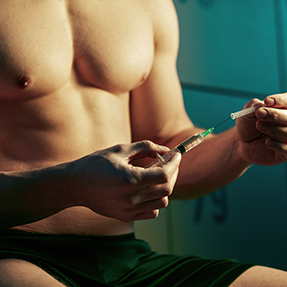
Potential pros and cons when you get cortisone shots
You’ve tried pain relievers and physical therapy for ongoing pain in your joints. But, you’ve noticed you’re not completely pain-free as much as you like. That’s when a steroid shot may be the next step when the tried and true methods of pain relievers or physical therapy are no longer effective at reducing pain and inflammation from musculoskeletal conditions.
Steroids, short for corticosteroids or cortisone, are synthetic drugs closely resembling cortisol, a hormone your adrenal glands produce naturally. However, corticosteroids are not the same as the male hormone-related steroid compounds (anabolic steroids) sometimes used by athletes. Instead, corticosteroids work by reducing inflammation helping treat many types of inflammatory diseases and conditions. These conditions can include osteoarthritis, bursitis, tendinitis, or carpal tunnel syndrome.
Overview of cortisone shots
A cortisone injection may help relieve pain and inflammation in a specific body area. They are commonly injected directly into joints such as an ankle, elbow, hip, knee, shoulder, spine, or wrist. The injections usually comprise a corticosteroid medication and a local anesthetic and are generally given as an outpatient during a doctor’s visit.
The decision for a steroid shot is based on an individual’s need. Factors such as the patient’s age, level of physical activity, disease conditions, and medications they are taking will be considered and evaluated by a doctor before recommending these shots.
What to expect when given a steroid shot
The injection site will be cleaned, followed by an anesthetic spray to numb the needle’s insertion area. Then, depending on the location, your doctor may use an ultrasound or fluoroscopy to view the needle’s direction into your body to inject it into the right location.
Pressure will be felt as the needle is inserted, but there should be minimal discomfort. After the shot, some people may feel redness and warmth across their chest or face from the cortisone shot.
Potential advantages of steroid shots
The goal of giving a steroid shot is to bring relief from inflammation and pain in a joint. For many people, these injections result in a significant reduction in discomfort, helping a person to continue with regular activities with more ease, free from pain. Steroid injections may also help avoid the need for oral steroids or increased doses, which can have greater side effects.
Potential disadvantages of steroid shots
Like any medical procedure of injecting a substance into the body, there can be downsides.
One downside is that steroid shots should not be given if the area is already infected or the joint is severely destroyed, as the injection would not benefit. In addition, anyone on anticoagulants, blood thinners, or anyone with a potential bleeding disorder may not be candidates for these injections.
Ideally, steroid shots not be given any more frequently than every three or four months. The reason repeated cortisone injections are discouraged is that they can begin to cause damage to tissues over time. In addition, if injections are given more frequently into the same area, it can begin to cause weakness within the bone, ligaments, and tendons surrounding that area.
However, suppose a patient with severe knee arthritis receives a steroid shot every six months, helping them significantly. In that case, the number of shots probably does not matter much.
But if a patient has a healthy shoulder with shoulder tendonitis, limiting the number of steroid shots helps prevent further damage to these tendons. Studies have shown that people receiving regular injections can, over time, develop long-term damage to their joints.
One area that many orthopedic surgeons recommend against injecting a steroid shot is around the Achilles tendon for the treatment of Achilles tendinitis. Steroid shots in this area of the body have been known to increase the possibility of Achilles tendon rupture.
In rare cases, there can be side effects of infection, allergic reactions, local bleeding, rupture of a tendon, or skin discoloration. In addition, in persons with diabetes, steroid or cortisone shots can elevate blood sugar. In these situations, they must carefully monitor their blood sugar for the first few days after the injection. Cortisone injections can also somewhat suppress the body’s ability to fight an infection, possibly worsening or masking it by suppressing the symptoms and signs of inflammation.
Anyone considering getting a steroid shot should thoroughly discuss with their doctor the risks and benefits they can expect and carefully decide if these injections are right for them.
Dr. David Samadi is the Director of Men’s Health and Urologic Oncology at St. Francis Hospital in Long Island. He’s a renowned and highly successful board certified Urologic Oncologist Expert and Robotic Surgeon in New York City, regarded as one of the leading prostate surgeons in the U.S., with a vast expertise in prostate cancer treatment and Robotic-Assisted Laparoscopic Prostatectomy. Dr. Samadi is a medical contributor to NewsMax TV and is also the author of The Ultimate MANual, Dr. Samadi’s Guide to Men’s Health and Wellness, available online both on Amazon and Barnes & Noble. Visit Dr. Samadi’s websites at robotic oncology and prostate cancer 911.
